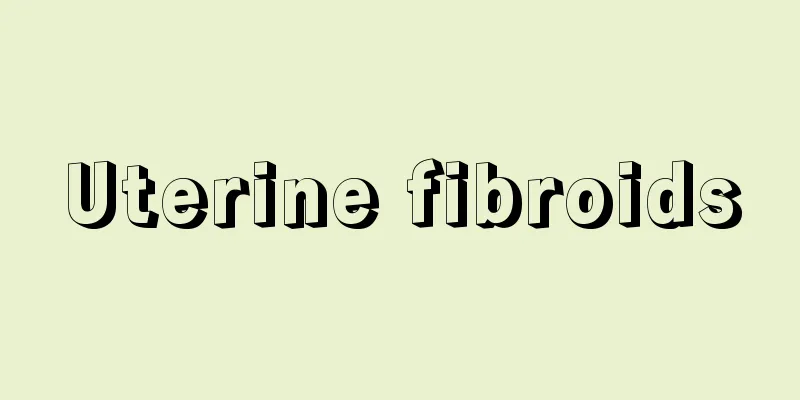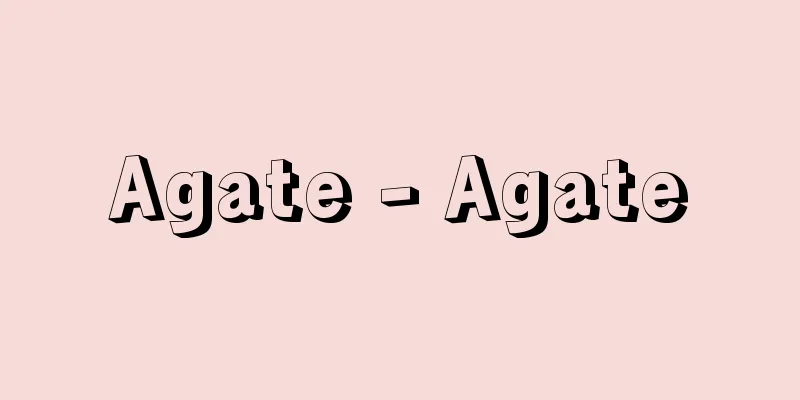Uterine fibroids

|
What kind of disease is it? ●Main symptoms and course Uterine fibroids are a disease in which the muscle tissue that makes up the wall of the uterus grows abnormally, causing a lump-like mass (tumor). They vary in size, from the size of an azuki bean to the size of an adult's head. Although they are tumors, uterine fibroids are benign and are one of the most common diseases. Symptoms vary greatly from person to person and also depend on where in the uterus the fibroids are located. For example, some women have no symptoms at all, while others experience abdominal or back pain only during menstruation, anemia due to heavy menstrual bleeding, or irregular vaginal bleeding. When fibroids grow, they put pressure on the surrounding organs and pelvis, causing lower abdominal pain, lower back pain, constipation, and frequent urination. Depending on the size and location, you may feel a lump when you touch your stomach. ● Causes of the disease and how symptoms develop Because there are almost no patients who develop uterine fibroids before their first menstruation, because they are most common in women in their 30s and 40s when the secretion of female hormones is active, and because fibroids naturally shrink after menopause, it is certain that female hormones (estrogen) are involved. Since it is a benign tumor, there is no need to worry about it progressing to cancer. However, accurate testing is necessary to distinguish it from ovarian cancer, uterine cancer, and cervical cancer. In the case of asymptomatic fibroids, it is sufficient to simply observe the condition. There are two types of uterine fibroids: cervical fibroids that occur in the cervix and corpus fibroids that occur in the uterine body, with most being corpus fibroids. Corpus fibroids are classified into three types depending on where they occur: those that grow on the outside of the uterus are called subserosal fibroids, those that grow on the inside are called submucosal fibroids, and those that grow within the muscle layer are called intramyocellular fibroids. They are often multiple (60-70 percent of cases), and it is not uncommon for multiple submucosal, intramyocellular, and subserosal fibroids to occur together. Submucosal myomas increase the surface area of the endometrium, causing increased menstrual bleeding (menorrhagia), anemia, palpitations, and shortness of breath, which can lead to dysmenorrhea and infertility. Intramural fibroids are the most common of the three and are associated with menstrual bleeding and abdominal pressure symptoms. Subserosal fibroids cause abdominal pressure symptoms as well as pain when the fibroid stalk twists. ●Characteristics of the disease This is a common gynecological disease, affecting 20 to 30 percent of people over the age of 30. EBM checks on common treatments and care [Treatment and care] Use low-dose estrogen-progesterone combined pill [Rating] ☆☆ [Evaluation Points] Although there are reports that contraceptive pills are contraindicated for uterine fibroids, clinical experience has shown that menorrhagia associated with uterine fibroids responds well to low-dose pills. This is thought to be due to atrophy of the endometrium. As it can be used by women who want to prevent pregnancy and has few side effects, it is worth trying before proceeding with treatments that have a significant impact on the body. [Treatment and care] Use of IUS (intrauterine device) [Rating] ☆☆☆ [Evaluation Points] The levonorgestrel (progestin) sustained-release IUS (Intra Uterine System) is a contraceptive device that is inserted into the uterus. Observational studies and systematic reviews have shown that it reduces endometrial volume and bleeding, and improves anemia. It can also be used by women who want to prevent pregnancy. (1)-(3) [Treatment and care] Use of progestins [Rating] ☆☆☆ [Evaluation Points] Suppresses endometrial proliferation and improves menstrual bleeding. It is recommended for women with mild to moderate symptoms who wish to use contraception. Cohort studies have shown that it reduces the risk of fibroid formation. (4)(5) [Treatment and care] Shrinking fibroids with hormonal medication [Rating] ☆☆☆☆☆ [Evaluation Points] GnRH agonists are used to suppress the female hormone (estrogen), which is essentially a drug that induces a state of menopause. Several highly reliable clinical studies have confirmed that this drug reduces the size of uterine fibroids by 35 to 60 percent. (6)-(8) [Treatment and care] Surgery to remove only the fibroids [Rating] ☆☆☆☆☆ [Evaluation points] Myomectomy, which removes only the fibroids, is an effective treatment for women who wish to become pregnant or who wish to keep their uterus. Highly reliable clinical research has shown that this surgical method is superior to a total hysterectomy, in which the entire uterus is removed, in that it requires less surgery time and hospital stay, and there is less blood loss. Clinical research has also confirmed that when myomectomy is performed laparoscopically, there is less postoperative pain and fever, and recovery is quicker. (9)-(13) [Treatment and care] Uterus removal [Rating] ☆☆☆☆☆ [Evaluation points] Hysterectomy is the most reliable treatment method because it can eliminate symptoms and recurrence of uterine fibroids. Highly reliable clinical studies have confirmed that physical symptoms, mental state, and quality of life (QOL) improve after hysterectomy. There are three types of total hysterectomy: "transabdominal hysterectomy" (a method in which the uterus is completely removed through an abdominal incision), "transvaginal hysterectomy" (a method in which a scalpel is inserted through the vagina to remove the uterus), and "laparoscopic total hysterectomy" (a small hole is made in the abdomen, a surgical instrument called a laparoscope is inserted through it, and the surgery is performed while viewing images of the abdomen on a monitor). Of these, highly reliable research has proven that "laparoscopic total hysterectomy" results in faster recovery and less postoperative pain than "transabdominal hysterectomy." However, there are also reports that the surgery time is approximately 30 minutes longer and that there is an increase in bladder and ureteral damage. (14)-(16) Reliable clinical studies have shown that transvaginal hysterectomy has the best results compared to transabdominal hysterectomy and laparoscopic total hysterectomy. It is said to be safe, has a short hospital stay, and is low cost due to its few short-term and long-term complications, and some overseas believe that it should be chosen before laparoscopic surgery. In addition, transvaginal hysterectomy takes 17 minutes less time than laparoscopic surgery, and compared to transabdominal (open surgery), it also has a shorter hospital stay and is sooner able to resume normal daily activities, resulting in less bleeding and pain, and faster postoperative recovery. There are no absolute contraindications to transvaginal hysterectomy, but the transvaginal approach can be difficult in cases where malignant diseases are suspected, fibroids are large, intraperitoneal adhesions are suspected, or in cases where the uterus does not descend, such as nulliparous women, severe obesity, radiation exposure to the pelvis, or when the uterus does not descend. (17)(18) There are no large-scale studies yet to determine whether robotic-assisted hysterectomy (Da Vinci procedure) is better than traditional laparoscopic hysterectomy in terms of cost-effectiveness, complication rates, blood loss, and recovery time. [Treatment and care] Endometrial ablation [Rating] ☆☆☆☆☆ [Evaluation points] Hysteroscopic endometrial ablation and microwave endometrial ablation are methods to destroy the endometrium by cauterizing it, and stop bleeding. Because they avoid the need for surgery, which places a great burden on the body, they accounted for 60% of surgeries for menorrhagia in the UK between 2003 and 2006. They are not suitable for cases where endometrial hyperplasia or cancer is suspected, or for those hoping to become pregnant, but they are also suitable for menorrhagia caused by organic diseases such as uterine fibroids. When endometrial ablation was performed on women with uterine fibroids, 23 percent of them became amenorrhea, but 8 to 29 percent of them ended up undergoing a hysterectomy within five years. The main factor behind this was their young age (under 45 years old) rather than the presence of uterine fibroids. However, if the uterine cavity is more than 9 centimeters, endometrial ablation will not result in amenorrhea, and bleeding may continue, resulting in a hysterectomy. In cases of large fibroids that protrude into the uterine cavity, such as those that are expanding the uterine cavity, the possibility of reoperation or a hysterectomy increases. (19)-(23) [Treatment and care] Perform uterine artery embolization (UAE) [Rating] ☆☆☆☆☆ [Evaluation points] A catheter is passed from the right common femoral artery to the uterine artery, and the artery that carries nutrients to the fibroids is plugged with gelatin, sponge, etc. The plug is absorbed in 1 to 3 weeks, and the artery is said to reopen. At present, it is not covered by insurance in Japan, but it has a high hemostatic effect and is effective in cases of heavy bleeding, and is said to be effective in improving menorrhagia and shrinking fibroids. A randomized controlled trial (RCT) comparing UAE and total hysterectomy in terms of the progress and health-related QOL (quality of life) five years after treatment found that 82.7 percent of the UAE group experienced disappearance or relief of menorrhagia symptoms after treatment, and health-related QOL improved significantly in both groups. 28.4 percent of the UAE group experienced insufficient symptom improvement and required a total hysterectomy, but no significant difference in satisfaction with treatment was noted between the two groups. However, there have been reports of an increase in complications, unscheduled visits, and re-admissions, and further research is needed to determine which types of fibroids are best suited for treatment. (24)-(26) [Treatment and care] MR-guided ultrasound therapy [Rating] ☆☆☆ [Evaluation Points] MR-guided focused ultrasound (MRgFUS) is a method of applying high-intensity ultrasound under MRI guidance to heat tumors to 60-90 degrees, causing thermal coagulation, degeneration, and necrosis. It is said to be a treatment that places less strain on the body, but it is not yet covered by insurance in Japan. Fibroid volume decreased by 30% in 6 months, symptoms improved significantly, and the time to return to society was shortened. However, it is not fully established as a treatment method, as it requires a long time for treatment, is not suitable for large or multiple fibroids, or is not suitable for cases where the intestine or sciatic nerve cannot be avoided due to the location of the fibroid. However, it is considered to be a useful treatment method overseas, and in the UK in particular, reports have been issued from hospitals belonging to the NHS (National Health Service) supporting this treatment as being cost-effective, and it is considered to be one of the treatment methods of the future. (27)-(29) Checking commonly used drugs with EBM Progesterone preparations [drug name] Hislon/Provera (medroxyprogesterone acetate) (4)(5) [Rating] ☆☆☆ [Evaluation points] Suppresses endometrial proliferation and improves menstrual bleeding. Good for women with mild to moderate symptoms who wish to use contraception. Cohort studies have shown that it reduces the risk of fibroid formation. Low-dose pill [Medical use] Monophasic first-generation pill [Medical name] Ortho M-21/Lunabell combination tablet (norethisterone/ethinyl estradiol combination drug) [Rating] ☆☆ [Medicinal use] Monophasic fourth-generation pill [Drug name] Yaz combination tablet (drospirenone/ethinylestradiol combination drug) [Rating] ☆☆ [Medicinal use] Triphasic first generation pill [Drug name] Ortho 777-21/Synphase T28 (norethisterone-ethynyl estradiol combination drug) [Rating] ☆☆ [Medicinal use] Triphasic second-generation pill [Drug name] Tri-Cyclen 21/28/Anju 21/28 (levonorgestrel/ethinyl estradiol combination drug) [Rating] ☆☆ [Medicinal use] Triphasic third-generation pill [Drug name] Marvelon 21/28 (desogestrel/ethinyl estradiol combination drug) [Rating] ☆☆ [Evaluation points] Although there have been no large-scale studies, these drugs are commonly used. They are good initial treatments for those who wish to use contraception and suffer from heavy menstrual flow due to fibroids. Drugs to shrink fibroids [Drug use] GnRH agonist [Drug name] Sprecur (buserelin acetate) (1)(2) [Rating] ☆☆☆☆☆ [Drug name] Nathanil (nafarelin acetate) (1)(2)(8) [Rating] ☆☆☆☆☆ [Drug name] Leuprorelin (leuprorelin acetate) (1)(2) [Rating] ☆☆☆☆☆ [Evaluation points] Highly reliable clinical studies have confirmed that these drugs are effective in shrinking fibroids. Overall, it is currently the most reliable treatment . Treatment varies depending on symptoms. Treatment for uterine fibroids is determined by their size and the severity of associated symptoms. Usually, if the fibroid is small and does not cause any discomfort or deterioration of physical condition such as anemia or infertility, no special treatment is given and the condition is monitored regularly. However, if the fibroid grows large and presses on the surrounding organs and pelvis, causing lower abdominal pain, back pain, constipation, frequent urination, etc., or if it causes menstrual irregularities severe enough to cause anemia, hormone therapy or surgery is performed. Using IUS, progesterone preparations, and low-dose pills is a good first treatment for those who wish to avoid pregnancy and are suffering from menstrual bleeding due to fibroids. It is necessary to be careful with IUS, as it may come out of the vagina due to the presence of uterine fibroids. The effectiveness of hormonal drugs (pharmacotherapy) has been confirmed. Several highly reliable clinical studies have confirmed that the use of GnRH agonists can suppress heavy menstrual bleeding and shrink uterine fibroids. However, side effects such as menopausal symptoms due to reduced estrogen, osteoporosis, blood pressure fluctuations, dry vaginitis, joint pain, muscle pain, edema, nausea, insomnia, and mood swings have also been reported, so care must be taken with the duration of administration (usually 6 months). If the drug is used for more than 12 months, bone density will decrease and the risk of osteoporosis will increase. However, this treatment is not a cure, and although the fibroids will shrink while the drug is being used, they will grow back or symptoms will recur if the drug is stopped. Therefore, it is sometimes used to reduce the size of fibroids 3 to 6 months before surgery. By reducing the size of uterine fibroids, the uterus can be removed by less invasive methods such as transvaginal surgery and transverse incision (rather than vertical incision), and there is an advantage in that bleeding during surgery is reduced. If drug treatment is ineffective, surgical treatment will be performed. If hormone treatment is ineffective or if treatment cannot be continued due to side effects, surgery will be performed. If possible, a myomectomy will be performed to remove only the fibroids, but if the fibroids are very large and the entire uterus must be removed, a total hysterectomy will be performed. For both myomectomy and total hysterectomy, laparoscopic surgery is better than open surgery, and in the case of total hysterectomy, laparoscopic surgery is better than open surgery, and transvaginal hysterectomy is better than laparoscopic surgery, as they put less strain on the body and require less time for recovery. However, laparoscopic surgery is a relatively new surgical method, and the incidence of various complications may vary depending on the expertise of the medical team, so it is best to decide after careful consultation with your gynecologist. Endometrial ablation, uterine artery embolization, and MR-guided focused ultrasound therapy are also being developed and researched as new treatments. Discuss the advantages and disadvantages of each treatment with your doctor to decide which is best for you. (30) (1)Zapata LB, Whiteman MK, Tepper NK, et al. Intrauterine device use among women with uterine fibroids: a systematic review.Contraception. 2010;82:41-55. Source: "EBM: A book that explains correct treatment" Information about the book "EBM: A book that explains correct treatment" |
|
どんな病気でしょうか? ●おもな症状と経過 子宮筋腫(しきゅうきんしゅ)は子宮の壁をつくっている筋肉組織が異常に増殖して、こぶのようなかたまり(腫瘍(しゅよう))ができる病気です。大きさはさまざまで、あずき程度から大人の頭くらいのものまでみられます。腫瘍とはいっても子宮筋腫の場合は良性で、非常に多い病気の一つです。 症状は個人差が大きく、子宮のどこに筋腫ができるかによっても異なります。たとえば、まったく症状のない場合もあれば、月経時にのみ腹痛や腰痛がある場合、月経過多(月経の出血量が多い)によって貧血をおこす場合、不正性器出血がおきる場合などです。 筋腫が大きくなると、周囲の臓器や骨盤を圧迫するようになるので、下腹部の痛み、腰痛、便秘、頻尿(ひんにょう)をおこします。大きさや場所によっては、おなかを触るとしこりにふれることもあります。 ●病気の原因や症状がおこってくるしくみ 初潮前に子宮筋腫になる患者さんはほとんどいないことや、女性ホルモンの分泌(ぶんぴつ)が活発な30~40歳代の人に多くみられること、閉経以降には、自然に筋腫が小さくなることなどから、女性ホルモン(エストロゲン)が関係していることは確実です。 良性の腫瘍ですので、がんに移行する心配はありません。ただし、卵巣(らんそう)がんや子宮体がん・子宮頸(けい)がんと区別するために正確な検査が必要です。症状のない筋腫の場合は、経過観察でよいでしょう。 子宮筋腫には子宮頸部(けいぶ)にできる「頸部筋腫」と子宮体部にできる「体部筋腫」があり、ほとんどが体部筋腫です。体部筋腫はできる場所によって3種類に分類され、子宮の外側に大きくなるものを「漿膜下筋腫(しょうまくかきんしゅ)」、内側に大きくなるものを「粘膜下筋腫(ねんまくかきんしゅ)」、筋肉の層のなかにできるものを「筋層内筋腫(きんそうないきんしゅ)」と呼びます。多発性のことが多く(60~70パーセント)、粘膜下筋腫・筋層内筋腫・漿膜下筋腫が複数合併することも少なくありません。 粘膜下筋腫は子宮内膜の表面積が大きくなるため、月経時の出血量が多くなり(過多月経)、貧血、動悸(どうき)、息切れを伴いやすく、月経困難症や不妊の原因になります。 筋層内筋腫は3つのなかでもっとも多く、過多月経や腹部圧迫症状を伴います。漿膜下筋腫は腹部の圧迫症状のほか、筋腫の茎部(けいぶ)がねじれると痛みを生じます。 ●病気の特徴 婦人科のなかでも頻度(ひんど)の高い病気で、とくに30歳以上では20~30パーセントの人にみられるといわれています。 よく行われている治療とケアをEBMでチェック [治療とケア]エストロゲン・プロゲステロン混合低用量ピルを用いる [評価]☆☆ [評価のポイント] 子宮筋腫に避妊ピルは禁忌とする記述もありますが、臨床経験上、子宮筋腫に伴う過多月経は低用量ピルによく反応することが知られています。子宮内膜の萎縮(いしゅく)をおこすことによると考えられます。避妊したい女性にも使え、副作用も少ないことから、体への影響の大きい治療に進む前に試してみる価値があるといえます。 [治療とケア]IUS(子宮内避妊具)を用いる [評価]☆☆☆ [評価のポイント] レボノルゲストレル(黄体ホルモン)徐放型IUS(Intra Uterine System)は、子宮内に装着する避妊具です。子宮内膜の体積と出血を減少させ、貧血を改善したとする、観察研究とシステムレビューがあります。避妊したい女性にも使えます。(1)~(3) [治療とケア]黄体ホルモン製剤(プロゲスチン)を用いる [評価]☆☆☆ [評価のポイント] 子宮内膜の増殖を抑え、過多月経を改善します。避妊を希望する、軽症から中等度の症状の人によいでしょう。コホート研究で、筋腫形成のリスクを減らすといわれています。(4)(5) [治療とケア]ホルモン薬により、筋腫を小さくする [評価]☆☆☆☆☆ [評価のポイント] GnRHアゴニストは、女性ホルモン(エストロゲン)を抑制する目的で用いられ、いわば閉経状態をつくる薬です。非常に信頼性の高いいくつかの臨床研究によって、この薬によって、子宮筋腫の大きさが35~60パーセントも縮小することが確認されています。(6)~(8) [治療とケア]手術によって筋腫だけを摘出する [評価]☆☆☆☆☆ [評価のポイント] 筋腫だけを摘出する「筋腫核出術(きんしゅかくしゅつじゅつ)」は、妊娠を希望する女性や子宮を残すことを希望する女性にとって、有効な治療法です。非常に信頼性の高い臨床研究によって、この手術方法は子宮ごと摘出する「子宮全摘術」と比べて、手術時間や入院期間が短くなり、出血量も少ない点がすぐれていることがわかっています。また、筋腫核出術を腹腔鏡下(ふくくうきょうか)で行った場合は、術後の痛みや発熱が少なく、回復も早いということも臨床研究で確認されています。(9)~(13) [治療とケア]子宮を摘出する [評価]☆☆☆☆☆ [評価のポイント] 子宮全摘術は、子宮筋腫の症状や再発を取り除くことができるため、もっとも信頼できる治療方法です。非常に信頼性の高い臨床研究によって、子宮全摘術を受けた場合、身体症状、精神状態、生活の質(QOL)が改善したということが確認されています。 子宮全摘術には、「経腹式子宮全摘術」(開腹して子宮を全摘する方法)、「経腟式子宮全摘術」(腟からメスを入れて、子宮を摘出する方法)、「腹腔鏡下全摘術」(おなかに小さな穴を開けて、そこから腹腔鏡という手術器具を挿入し、モニターで腹部の画像を見ながら、手術をする)の3種類があります。このうち、「腹腔鏡下全摘術」は、「経腹式子宮全摘術」に比べて、回復が早く、術後の痛みも少なかったということが、非常に信頼性の高い研究によって証明されています。しかし、手術時間が約30分長くなることや、膀胱(ぼうこう)尿管損傷は増えたとの報告もあります。(14)~(16) 「経腟式子宮全摘術」は「経腹式子宮全摘術」「腹腔鏡下全摘術」と比べて、いちばんよい結果であったという、信頼性の高い臨床研究の結果がでています。安全性にすぐれ、入院期間が短く、短期長期合併症も少ないことにより低コストであるとされ、海外では腹腔鏡での手術よりも先に選択すべきとの意見もあります。また、経腟式子宮全摘術は腹腔鏡下に比べて17分手術時間が短くてすみ、経腹式(開腹手術)に比べて、入院期間も短く、日常的な動きができるまでの日数も早かったことにより、出血量、疼痛(とうつう)が少なくすみ、術後の回復も早いといわれています。経腟式子宮全摘術の絶対禁忌はありませんが、悪性疾患が疑われる、筋腫が大きい、腹腔内の癒着(ゆちゃく)が考えられるなどの場合や、未産婦、高度の肥満、骨盤内の放射線照射、子宮が下降しないときなどでは、経腟式なアプローチがむずかしいこともあります。(17)(18) ロボットアシスト子宮摘出術(ダヴィンチ手術)については、今までの腹腔鏡下子宮摘出術に比べ、費用対効果や合併症の発生率、出血量、回復までにかかる期間などの面で、よりよい方法であるという大規模研究の結果はまだでていません。 [治療とケア]子宮内膜焼灼術(しょうしゃくじゅつ) [評価]☆☆☆☆☆ [評価のポイント] 子宮鏡下子宮内膜焼灼術やマイクロ波子宮内膜アブレーションは、子宮内膜を焼灼することにより内膜を破壊し、出血を止める方法です。体に負担の大きい手術をしなくてもすむことより、イギリスでは2003~2006年の間には過多月経の手術の60パーセントをしめるまでになりました。子宮内膜過形成やがんが疑われる場合や、妊娠を希望する場合には適応となりませんが、子宮筋腫など器質的疾患がある過多月経にも適応となります。 子宮筋腫の人に子宮内膜焼灼術をした場合、23パーセントが無月経になりましたが、5年以内に子宮全摘となる例が8~29パーセントありました。その要因としては、子宮筋腫の存在よりもむしろ年齢が若かった(45歳以下)ことが大きく作用しました。ただし、子宮内腔が9センチメートルを超える場合は、内膜焼灼をしても無月経とはならず出血が持続し、子宮全摘となることがあります。子宮内腔の拡大しているような、子宮内腔に飛びでている大きな筋腫の場合には、再手術や子宮全摘の可能性が高くなるといえます。(19)~(23) [治療とケア]子宮動脈塞栓術(そくせんじゅつ)(UAE)を行う [評価]☆☆☆☆☆ [評価のポイント] 右総大腿動脈から子宮動脈へカテーテルを通して、筋腫に栄養を運ぶ動脈をゼラチン、スポンジなどで栓をしてふさぎます。栓は1~3週間で吸収され、動脈は再開通するといわれています。現在のところ、日本では保険適用となっていませんが、止血効果が高く大量出血時に有効で、過多月経の改善や筋腫の縮小に効果があるといわれています。 UAEと子宮全摘について、治療後5年の経過と健康関連QOL(生活の質)を比較したランダム化比較試験(RCT)では、UAE群の82.7パーセントで治療後に過多月経の症状が消失または軽減し、両群で健康関連QOLは有意に向上したとされています。UAE群の28.4パーセントで症状の改善が不十分であり、子宮全摘を要しましたが、両グループ間で治療の満足度には有意差は認めませんでした。しかし、合併症や予約外の受診、再入院が増えたという報告もあり、どのような筋腫によい適応となるかは、さらなる研究が必要とされています。(24)~(26) [治療とケア]MRガイド下超音波療法 [評価]☆☆☆ [評価のポイント] MRガイド下集束超音波療法(MRgFUS)は、MRIガイド下に高密度超音波を当てて腫瘍を60~90度に加熱し、熱凝固・変性・壊死させる方法です。体への負担が少ない治療法といわれていますが、まだ日本では保険適用となっていません。筋腫体積は6カ月で30パーセント減少し、症状も有意な改善がみられ、社会復帰までの時間も短くなりました。しかし、治療に長時間を要することや、筋腫が大きい、または筋腫が多発している場合や、筋腫の位置により腸管や座骨神経を避けられないような場合は適応とはならないなど、治療法として十分に確立されているとはいえません。しかし、海外では有用な治療法であるとされ、とくにイギリスでは、NHS(国営医療保険制度)に属する病院からこの治療法がcost effectiveである(費用対効果が高い)と支持する報告が出ており、これからの治療法の一つとして考えられています。(27)~(29) よく使われている薬をEBMでチェック 黄体ホルモン製剤 [薬名]ヒスロン/プロベラ(メドロキシプロゲステロン酢酸エステル)(4)(5) [評価]☆☆☆ [評価のポイント] 子宮内膜の増殖を抑え、過多月経を改善します。避妊を希望する、軽症から中等度の症状の人によいでしょう。コホート研究で、筋腫形成のリスクを減らすといわれています。 低用量ピル [薬用途]一相性 第一世代ピル [薬名]オーソM-21/ルナベル配合錠(ノルエチステロン・エチニルエストラジオール複合剤) [評価]☆☆ [薬用途]一相性 第四世代ピル [薬名]ヤーズ配合錠(ドロスピレノン・エチニルエストラジオール配合剤) [評価]☆☆ [薬用途]三相性 第一世代ピル [薬名]オーソ777-21/シンフェーズT28(ノルエチステロン・エチニルエストラジオール複合剤) [評価]☆☆ [薬用途]三相性 第二世代ピル [薬名]トリキュラー21・28/アンジュ21・28(レボノルゲストレル・エチニルエストラジオール複合剤) [評価]☆☆ [薬用途]三相性 第三世代ピル [薬名]マーベロン21・28(デソゲストレル・エチニルエストラジオール複合剤) [評価]☆☆ [評価のポイント] いずれも大規模研究での報告はありませんが、一般的によく使われています。避妊希望がある、筋腫による過多月経に悩む人の最初の治療によいでしょう。 筋腫を小さくする薬 [薬用途]GnRHアゴニスト [薬名]スプレキュア(ブセレリン酢酸塩)(1)(2) [評価]☆☆☆☆☆ [薬名]ナサニール(酢酸ナファレリン)(1)(2)(8) [評価]☆☆☆☆☆ [薬名]リュープリン(リュープロレリン酢酸塩)(1)(2) [評価]☆☆☆☆☆ [評価のポイント] 非常に信頼性の高い臨床研究によって、これらの薬は筋腫を小さくする効果があると確認されています。 総合的に見て現在もっとも確かな治療法 治療は症状によって異なる 子宮筋腫は、その大きさと合併する症状の程度によって、治療法を決定します。 通常、筋腫が小さく、貧血や不妊のような体調の悪化や苦痛がない場合は、とくに治療をせず、定期的に経過を観察します。しかし、筋腫が大きくなり、周囲の臓器や骨盤を圧迫することで下腹部の痛みや腰痛、便秘、頻尿などを引きおこした場合、あるいは貧血になるほどの月経異常を引きおこしている場合には、ホルモン療法や手術が行われます。 IUS、黄体ホルモン製剤、低用量ピルを用いる 避妊希望がある人で、筋腫による過多月経に悩む人の最初の治療によいでしょう。IUSは子宮筋腫の存在により、腟より脱出してしまうことがあるので注意が必要です。 ホルモン薬(薬物療法)は効果が確認されている GnRHアゴニストの使用によって、重症の月経時の出血が抑えられ、子宮筋腫を縮小させる効果があるということが、非常に信頼性の高いいくつかの臨床研究で確認されています。しかし、副作用としてエストロゲンが少なくなることによる更年期症状、骨粗(こつそ)しょう症(しょう)、血圧の変動、乾燥性腟炎、関節痛、筋肉痛、浮腫(ふしゅ)、吐き気、不眠、気分のムラなども報告されていることから、投与期間(通常は6カ月)に注意する必要があります。薬の使用が12カ月以上になると、骨密度が減少し、骨粗しょう症のリスクが高くなります。 ただし、この治療は根治療法ではないため、薬の使用中は筋腫が小さくなりますが、使用をやめると大きくなったり、症状が再発したりします。そのため、手術の3~6カ月前に筋腫のサイズを小さくするために使われることもあります。子宮筋腫が小さくなることにより、経腟手術、横切開(縦切開ではなく)などのより負担の少ない方法で子宮の摘出ができ、手術中の出血が少なくなるメリットがあります。 薬物治療が効果なければ、手術療法を ホルモン薬による治療の効果がでない場合、または副作用のために治療を継続できない場合は手術を行うことになります。可能であれば筋腫だけを摘出する「筋腫核出術」を選択しますが、筋腫が非常に大きくて、子宮を全部摘出せざるをえない場合には「子宮全摘術」を行います。 筋腫核出術でも子宮全摘術でも、開腹手術よりも腹腔鏡下、子宮全摘術の場合は、開腹手術より腹腔鏡下、腹腔鏡下より経腟式子宮全摘術のほうが体への負担が少なく、回復するのに短時間ですむという利点があります。 しかし、腹腔鏡下手術は比較的新しい手術方法で、医療チームの熟練度によりさまざまな合併症の発症率が異なる可能性があるため、婦人科医とよく相談したうえで決めるとよいでしょう。 子宮内膜焼灼術、子宮動脈塞栓術、MRガイド下集束超音波療法も 新しい治療法として、子宮内膜焼灼術、子宮動脈塞栓術、MRガイド下集束超音波療法も開発研究されています。それぞれの治療法のメリット、デメリットを主治医とよく相談して決めましょう。(30) (1)Zapata LB, Whiteman MK, Tepper NK, et al. Intrauterine device use among women with uterine fibroids: a systematic review.Contraception. 2010;82:41-55. 出典 法研「EBM 正しい治療がわかる本」EBM 正しい治療がわかる本について 情報 |
Recommend
Taganrog (English spelling)
A city in the Rostov Oblast in southwestern Russia...
humiliores
…the upper classes (honorable people) during the ...
He Xiangu - Kasenko
…The eight immortals in Chinese folk legends are ...
Mariupol (English spelling)
A port city in eastern Ukraine. Population 492,00...
Oriflamme - Oriflamme
...It was discontinued during the Restoration per...
Kariwano
It is a district of Daisen City in central Akita ...
Kanagi (fish) - Kanagi
…It is found along the coast from Hokkaido to Kyu...
Radicalism
A translation of the English word radicalism, deri...
Gnaeus
…The human drama we see there is the secret that ...
Redpath, N. (English spelling) RedpathN
...Therefore, the giants who appeared before and ...
Futaba [town] - Futaba
A town in Futaba County, central Hamadori, eastern...
Evoia - Evoia
…Population: 210,000 (1991). Also called Évvoia o...
Arakure
A full-length novel by Tokuda Shusei. It was publ...
Charles IX - Charles
King of France (reigned 1560-1574). Son of Henry I...
Rainaldi, G.
…Italian architect. He led the Roman Baroque afte...









